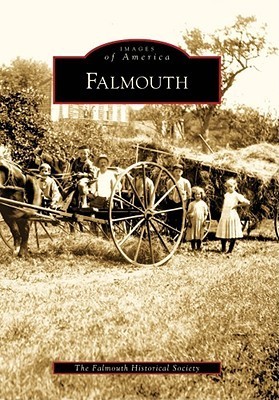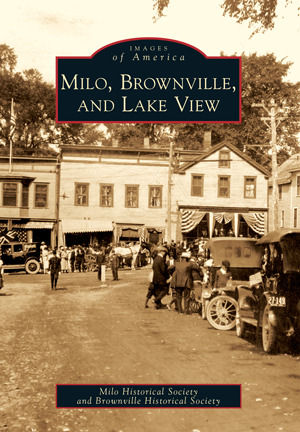


Books in series

Along Maine's Appalachian Trail
2011

Along the Damariscotta
1995

Along the Union River
1997

Anson
1998

Around Dover-Foxcroft
2008

Around Ellsworth and Blue Hill
1995

Around Great Moose Lake
2006

Around Hallowell
1996

Around Houlton
1994

Around Ripley
2003

Around Rockland
1996

Around Waterville
1995

Around Wiscasset
Alna, Dresden, Westport Island, Wiscasset, and Woolwich
1996

Auburn
1996

Bangor
1994

Bath Iron Works
2002

Bath and West Bath
1995

Baxter State Park and Katahdin
2012

Baxter State Park and the Allagash River
2002

Beaches of Wells
1997

Berwick
2014

Biddeford
2003

The Blaine House
2014

The Boothbay Harbor Region
1995

The Boothbay Region Revisited
2004

Brewer
1997

Bridgton
2008

Brooklin
2003

Brunswick and Topsham
1994

Buxton, Hollis, and Limington
1997

Camden and Rockport Revisited
2015

The Casco Bay Islands
1995

The Casco Bay Islands
1850-2000
2004

Castine
1996

Colby College
A Venture of Faith
1994

The Communities of Western Aroostook County
1995

Damariscotta Lake
2011

Deer Isle and Stonington
2004

Dexter
1995

Dixfield
2013

Eliot
2005

Falmouth
2009

Farmington, Wilton, Kingfield, and Sugarloaf
1997

Fort Kent
2009

Franco-Americans of Maine
2010

Gardiner on the Kennebec
1996

Georgetown
2014

Glimpses of Maine's Angling Past
2000

Gorham
1998

Gray
1999

Harpswell
1999

Jonesport and Beals
1999

Kennebunk
2005

Kennebunkport
1994

Kittery
2016

Kittery to Bar Harbor
Touring Coastal Maine
2010

The Lake Region
Bridgton, Harrison, Otisfield, Waterford, Bridgton and Saco River Railroad
1998

Lighthouses and Life Saving Along the Maine and New Hampshire Coast
1999

Lighthouses of Bar Harbor and the Acadia Region
2009

Lisbon
2006

Logging and Lumbering in Maine
2001

Lost Villages of Flagstaff Lake
2010

The Lower Penobscot River Region
1996

The Machias Bay Region
2001

Madison, Norridgewock, and Smithfield
1998

Maine Life at the Turn of the Century
Through the Photographs of Nettie Cummings Maxim
1995

Maine Lodges and Sporting Camps
2005

Maine State Prison
1824-2002
2009

Maine
Unforgettable Vintage Images of the Pine Tree State
2000

Maine's Covered Bridges
2003

Maine's Hunting Past
2001

Maine's Jewish Heritage
2007

Maine's Steamboating Past
2007

Millinocket
2008

Milo, Brownville, and Lake View
2009

Monhegan Island
2009

Monmouth
2010

The Moosehead Lake Region
1995

The Moosehead Lake Region
1900-1950
2004

Mount Desert Island
Somesville, Southwest Harbor, and Northeast Harbor
2001

New Gloucester
2009

Newport
2012

North Berwick
2013

Oakland
2004

Ogunquit By-The-Sea
1994

Old Kittery
1994

The Old Orchard
2003

Old Sebec Lake
1997

Old York
1994

Old York Beach
1994

Orono
2004

The Ossipee Valley
2005

The Oxford Hills
Greenwood, Norway, Oxford, Paris, West Paris and Woodstock
1999

Phippsburg
1999

Poland Spring
2009

The Portland Company
1846-1982
2002
Portland in Victorian Times
1998

Presque Isle, Caribou & New Sweden
1994

Rangeley Lakes Region
2004

Raymond and Casco
2011

Revisiting Seal Harbor and Acadia National Park
1997

The Rines Family Legacy
2005

Rockland Area Lime Industries
2006

Saco Revisited
2010

Scarborough
1996

Scarborough in the Twentieth Century
2004

The Sebago Lake Area
Windham, Standish, Raymond, Casco, Sebago, and Naples
1996

Sebago Lake
West Shore: Standish, Baldwin, Sebago, and Naples
2000

Shapleigh and Acton
2010

South Portland and Cape Elizabeth
1995

Togus, Down in Maine
The First National Veterans Home (ME)
1998

The Upper Kennebec Valley
1997

The Upper Kennebec Valley, Volume II
1999

Upper Saco River Valley
Fryeburg, Lovell, Brownfield, Denmark and Hiram
2002

Vessels of Camden
1998

Victorian Augusta
2008

Vinalhaven Island
1997

Vinalhaven Island's Maritime Industries
2015

Wells
2003

Westbrook
2014

Westbrook on the Presumpscot
1996

Wilton
2014

Winthrop
2003

Yarmouth
2002

Yarmouth Revisited
2013

York County Trolleys
1999